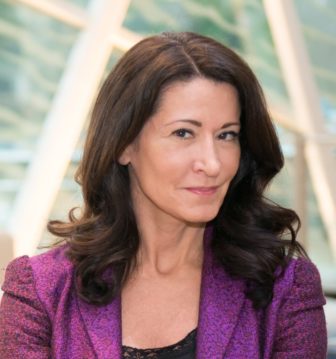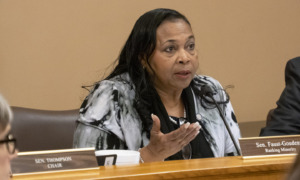 Growing up in New York state’s foster care system in the 1980s, I was well aware of the plight of those who age out of foster care without a parent or safety net. They often ended up on public assistance, homeless or incarcerated. They did not attend college, let alone graduate. In fact, less than 2 percent of foster youth completed college, and today the statistic is only marginally better — 3 percent.
Growing up in New York state’s foster care system in the 1980s, I was well aware of the plight of those who age out of foster care without a parent or safety net. They often ended up on public assistance, homeless or incarcerated. They did not attend college, let alone graduate. In fact, less than 2 percent of foster youth completed college, and today the statistic is only marginally better — 3 percent.
After three decades the needle barely moved. Why? Because, we cannot expect parentless youth to successfully navigate years of financial and emotional commitment on their own. However, in recent years that has changed and foster youth have begun to receive the “parental” help they need to make their college journey easier to navigate.
About half of all states have taken action to ensure that foster youth either pay no tuition or provide substantial financial assistance. I’m especially proud that New York has become one of the most recent, through its Foster Youth College Success Initiative (FYCSI).
New York was fortunate to have the now-deceased Chief Judge Judith S. Kaye, who was a tireless advocate for young people in general, and specifically for foster youth. Judge Kaye made an impression upon New York state lawmakers when she wrote, “Having intervened to ‘protect’ children by placing them in foster care, New York should also invest in their futures by clearing and supporting their paths to college graduation and the opportunity that comes with it.”
Judge Kaye’s message has universal application since there’s not a state in the union that doesn’t have that highest level of responsibility when it comes to foster youth. We must remember that they are in the protective custody of the state through no fault of their own. And so, our foster youth should not suffer even more trauma upon entering the system by being denied the support and opportunities that youth in the general population often get from their parents.
Young people in foster care have a powerful desire to go to college and succeed. In many cases, that desire dims because they know too well that historically, the odds are against them. Several young people in this very position recently shared their thoughts when asked: What would you want to say to those making decisions about funding directly connected to your pursuit of a college degree?
Chris, 19, is studying social work at the State University of New York (SUNY) at Brockport. He is gifted in theater and musical arts. He grew up in Syracuse and entered foster care when he was 17. He said, “There needs to be some form of funds for those of us still in care — for things like getting to and from school, for clothing and a place to live during semester breaks.”
Brieahanna, 20, is a sophomore at the University at Albany, studying accounting and hoping to become a CPA. She entered the foster care system when she was 9: “Foster youth are invisible kids. Some think the reason we are in foster homes is because we did something wrong — but the truth is we were placed there to protect us from harm and risk.”
Kurt, 20, is a sophomore at City University, with an interest in science and public policy. He checked himself into foster care when his home environment turned toxic: “The FYCSI funding allows me to pursue an education and no longer separates me from the rest of the world and my peers. However, I worry that if the funding runs out, I might not have a safe place to live.”
New York state’s FYCSI program strives to be holistic in nature since it is based on the fact that college success isn’t simply about paying the bill. It is about building a safety net that offers parentless youth housing during semester breaks, transportation to and from campus, and provides comprehensive counseling related to every aspect of college matriculation. Again, this is about the parental supports that are absent for most foster youth.
Earlier this month, New York state leaders increased FYSCI funding by 50 percent from $3 million to $4.5 million to ensure that a third cohort of students receive support, including those enrolling for the first time in September. This increase will provide funding for a few hundred more foster youth. However, since resources are limited, many of New York’s 4,000 college-age foster youth will remain in need.
No doubt every state in the nation is wrestling with budgetary challenges. But if a high-quality education is not offered to our foster youth while they are in foster care, states will continue paying for them once they age out parentless as they enter the pipeline of public assistance, homelessness or incarceration. This is a small investment that will continue to have significant revenue-generating returns. I ask leaders across the country to remember their responsibility — these are OUR kids, and we must expand on an opportunity for the light of higher education to burn ever brightly for those relying on our “parental” care.
Regina Calcaterra, a former foster youth, is the author of the best-selling book “Etched in the Sand,” co-author of “Girl Unbroken,”and advocate for foster youth. She is a law partner at the New York office of Wolf, Haldenstein, Adler, Freeman & Herz LLP.






























